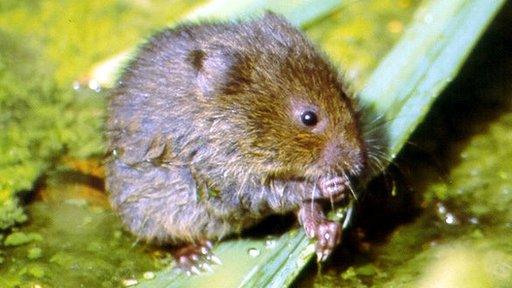Kielder Forest's 100th osprey chick takes flight
- Published
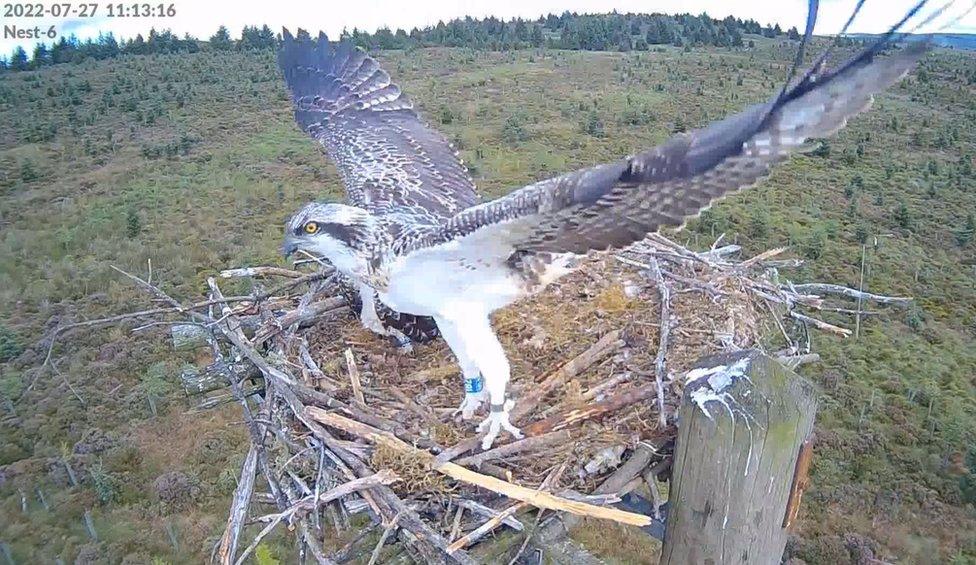
The bird had been flapping her wings in the previous days indicating she was preparing for her first flight
A programme to reintroduce endangered ospreys to Northumberland has seen its 100th chick take to the skies.
The milestone was reached when the female, named Fourlaws, summoned up the courage to leave her nest in Kielder Forest on Wednesday.
Her take-off was recorded on camera and she returned 35 minutes later.
The fish-eating birds of prey were born in the county for the first time in over 200 years after being reintroduced in 2009.
Once found throughout the UK, wild ospreys were persecuted and the species became extinct in England in 1847 and in Scotland in 1916.
Their recent success has delighted conservationists as Kielder has become a key location for nature recovery, acting as a bridgehead for the species to continue recolonising England.
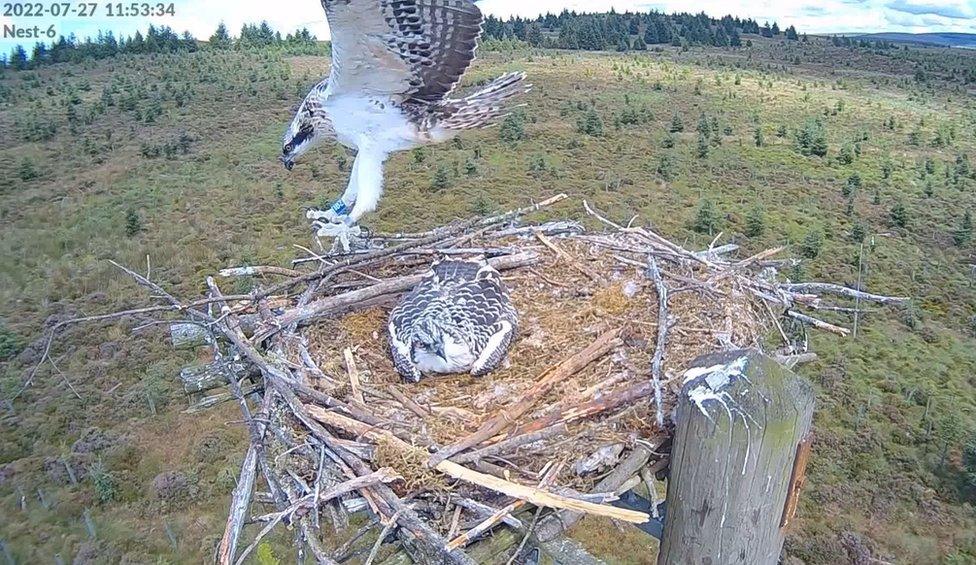
Watched by her timid sister, Fourlaws was captured on a camera over their nest making her first flight
Tom Dearnley, ecologist with Forestry England, said: "To have 100 chicks successfully fledge in just 13 years and by a bird that had been absent for so long is amazing.
"This is the restoration of a population, a reservoir of animals which can spread outwards creating a huge boost to biodiversity.
"It's full repayment for the effort invested in building nesting platforms in the years before their arrival and the work of the whole team."
The chicks that hatched this year were named after parts of Northumberland beginning with the letter F.
It follows a decision in 2017 for an alphabetised naming scheme.
Osprey chicks from successful Kielder nest ringed
The next stage for the chicks will be learning to hunt for themselves.
The young ospreys must build up body fat as within weeks they will embark on a hazardous 5,000-mile migration as far south as sub-Saharan Africa.
In two years' time, they should make their first return to the UK.
"The significance of this size of population is that locally born birds are now being seen at other locations across the UK, as well as returning to Northumberland to raise their own families," Mr Dearnley added.
"It just shows what can be done with well-managed habitats, foresight and collaborative working."

Follow BBC North East & Cumbria on Twitter, external, Facebook, external and Instagram, external. Send your story ideas to northeastandcumbria@bbc.co.uk, external.
- Published15 August 2021
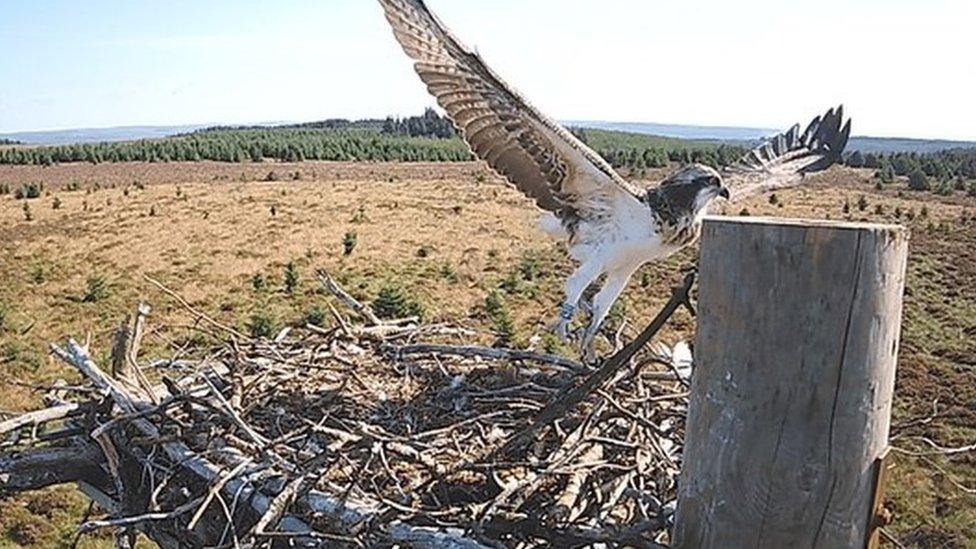
- Published9 August 2021
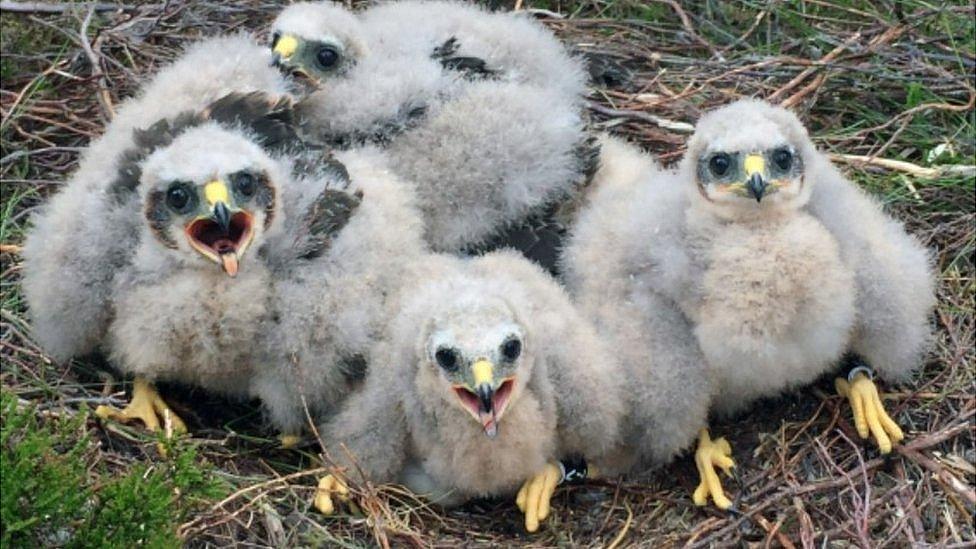
- Published8 June 2020
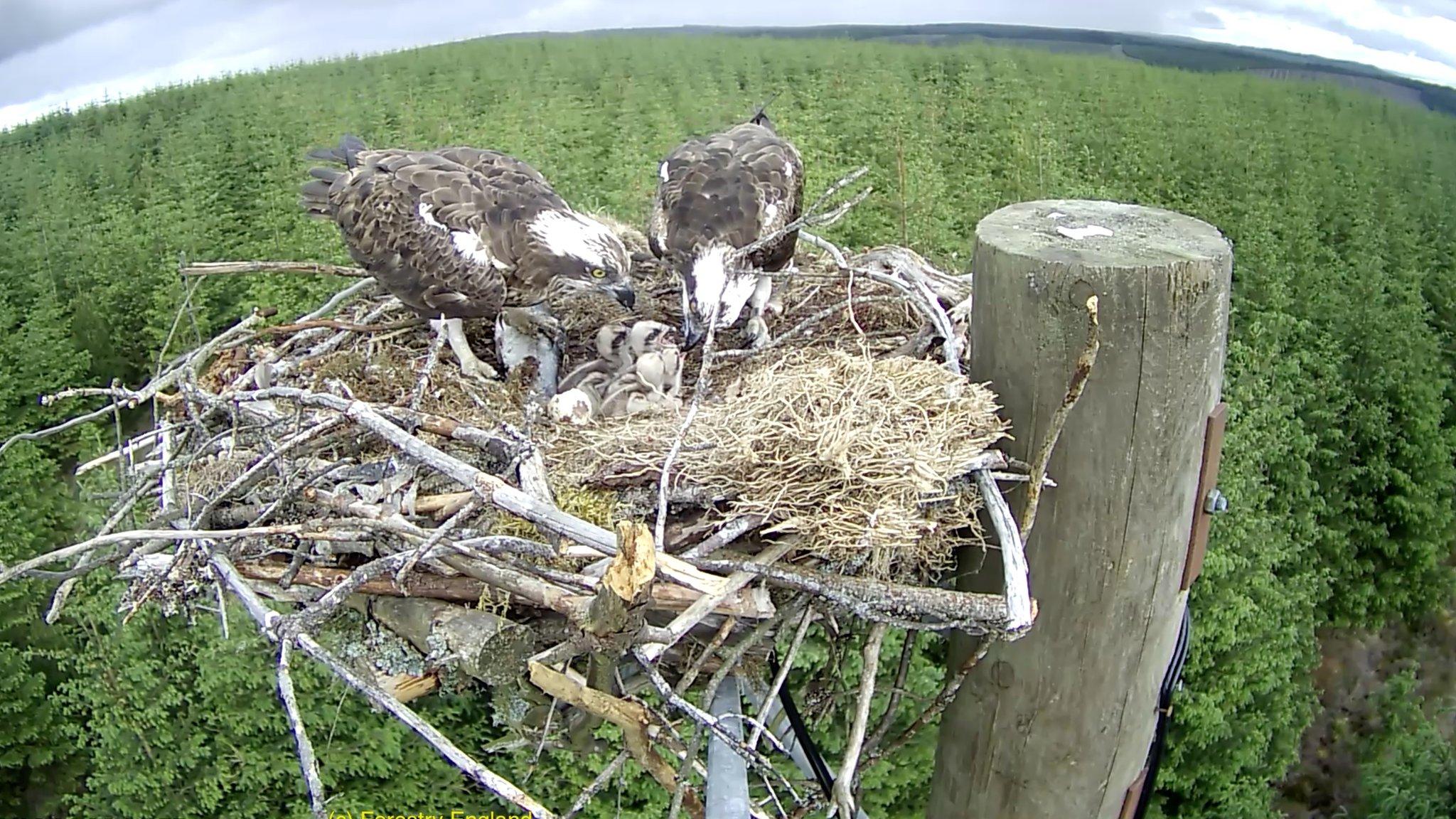
- Published26 January 2013
